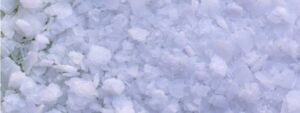Water is a basic element for life on earth, but it is also crucial for global social and economic development. However, it is not always easy to have access to clean water both for direct human consumption and, for example, for the food industry.
Treatment with sodium hypochlorite is the most efficient way of disinfecting water to make it potable. It not only makes it fit for human consumption, but also ensures that it remains disinfected all the way from the water treatment plant to the tap or proper storage, as sodium hypochlorite is very effective against microbes that can live in water, such as bacteria, viruses, fungi and algae.
Thus, we can state that 100% of the world’s population needs sodium hypochlorite to disinfect and treat drinking water, but at the same time a large percentage of the population does not have direct access to this material, but has to import it.
There is a major drawback to importing: Sodium hypochlorite is considered a hazardous material by the ADR, which on the one hand limits or prevents its distribution in certain countries, and on the other hand makes its transport more expensive, as special containers are required for the transport of this type of goods.
How is the sodium hypochlorite manufactured?
Sodium hypochlorite was discovered in the 18th century by Claude Louis Berthollet, a French chemist, who made it known as l’eau de Javel or bleach, although it was the pharmacist Antoine Germain Labarraque who discovered the disinfecting capacity of sodium hypochlorite.
It is basically a compound containing chlorine in an oxidized state (NaClO). Dissolved in water, it is known as bleach, and can be found in solid form as pentahydrated salt.
By means of an electrolysis process applied to a salt solution or brine, we obtain sodium hypochlorite. In a very simplified form, in an electrolysis cell, salt is introduced with water (which is basically sodium chloride), and thanks to the electric current, chlorine and soda are produced, which react immediately to form sodium hypochlorite.
The use of sodium hypochlorite for water treatment and purification
As mentioned above, sodium hypochlorite is nowadays essential for people to have access to safe drinking water. The ingestion of contaminated water can have very harmful and even lethal effects on health, since the bacteria, viruses, insects or larvae contained in contaminated water can cause cholera, diarrhea, typhoid fever, malaria, dengue fever or Zika, among others. In fact, according to the WHO, diarrheal diseases are among the 10 diseases that cause the most deaths in the world, especially in countries with a low per capita income.
To make water drinkable and avoid these risks, sodium hypochlorite is added to the water, up to a maximum of 10% of the water volume. Sodium hypochlorite is also used to treat wastewater and industrial water because of its ability to eliminate microorganisms such as bacteria, viruses and fungi.
Thus, we have sodium hypochlorite as a global necessity to have potable water for human consumption, but at the same time it is a matter that cannot be easily transported due to its restrictions as a hazardous material – since, on its own, it is toxic and highly irritating, and very dangerous in contact with other agents such as ammonia or any acid. What scenario does this leave us with?
An increasingly widespread alternative is the installation of electrolysis plants to produce sodium hypochlorite locally. This solves the local demand, avoids transportation risks and restrictions, and also reduces the costs associated with water purification and treatment and its derivative processes to which this water is applied, in the case of industry.
In fact, and given that the global demand for sodium hypochlorite is expected to grow by 5% annually in the period 2021-2030, more and more companies are opting for the installation of an electrolysis plant as an investment for the future or to supply their own local demand. This is not only a booming market, but also a safe one, because it is clear that we will never stop needing water to live.





